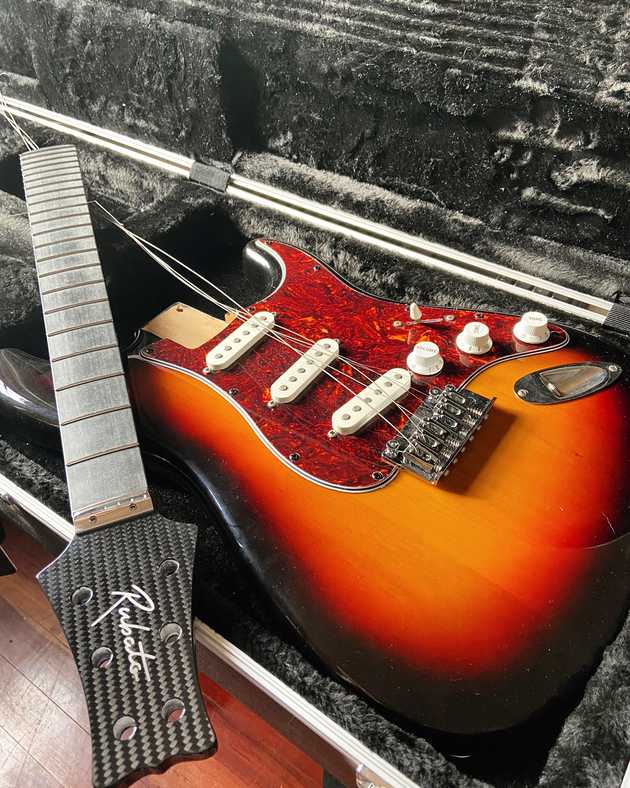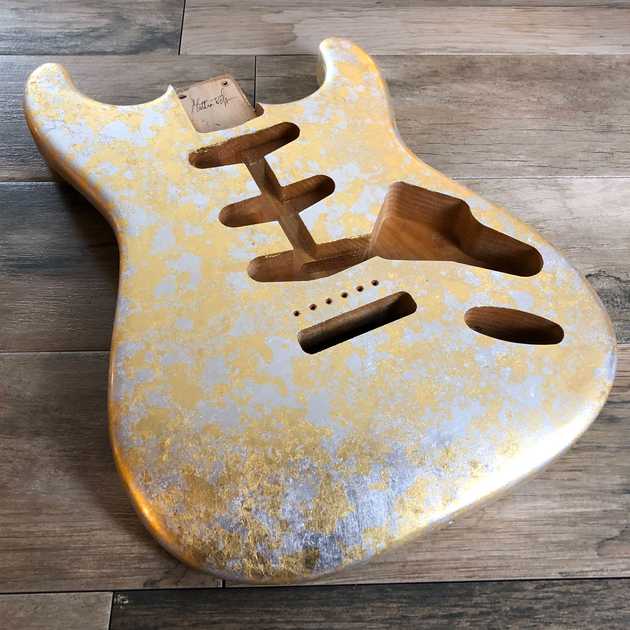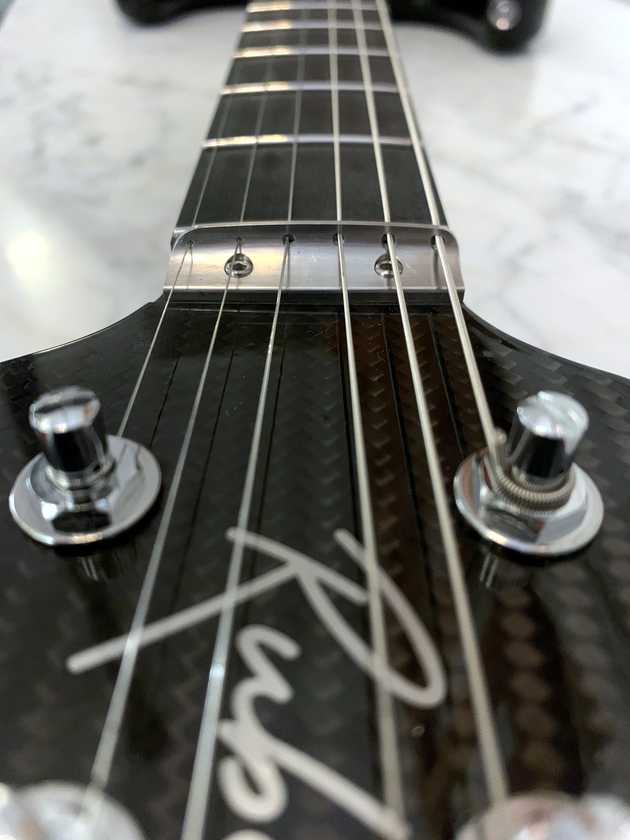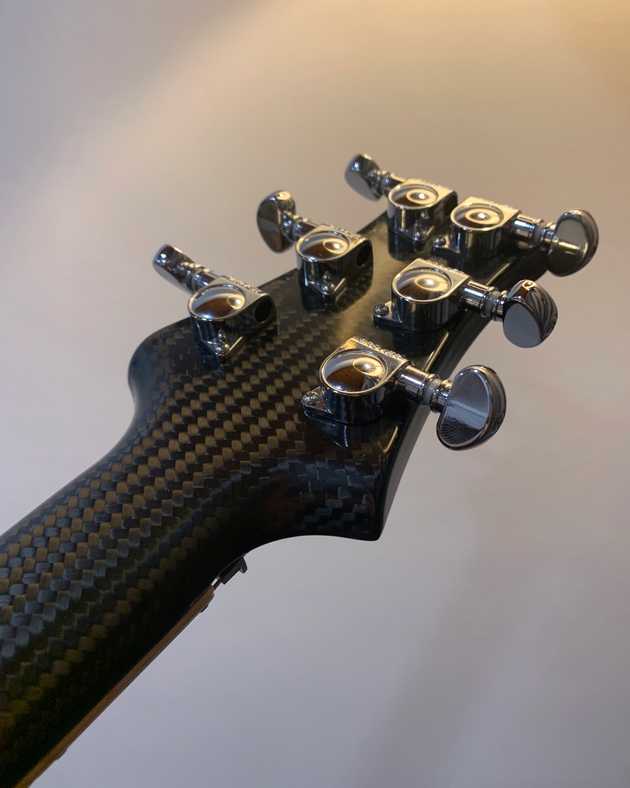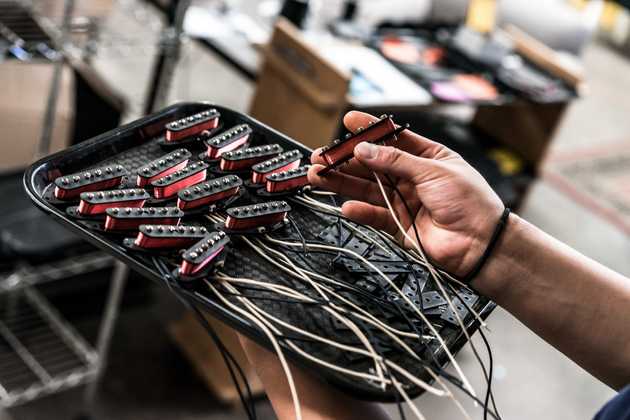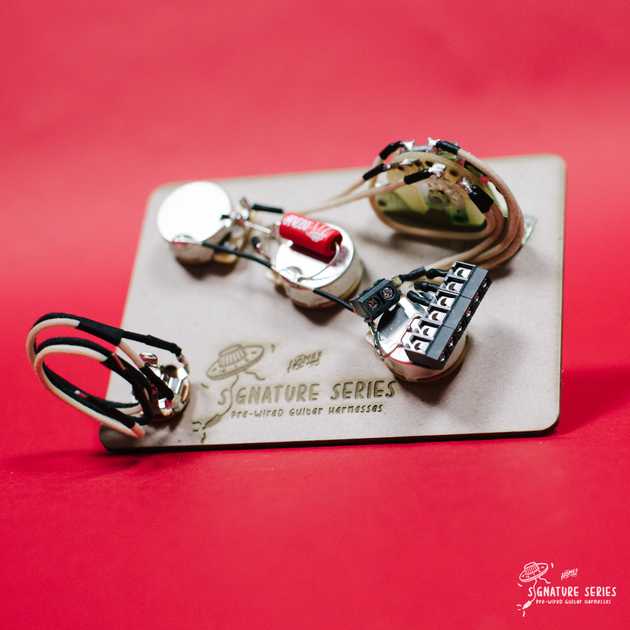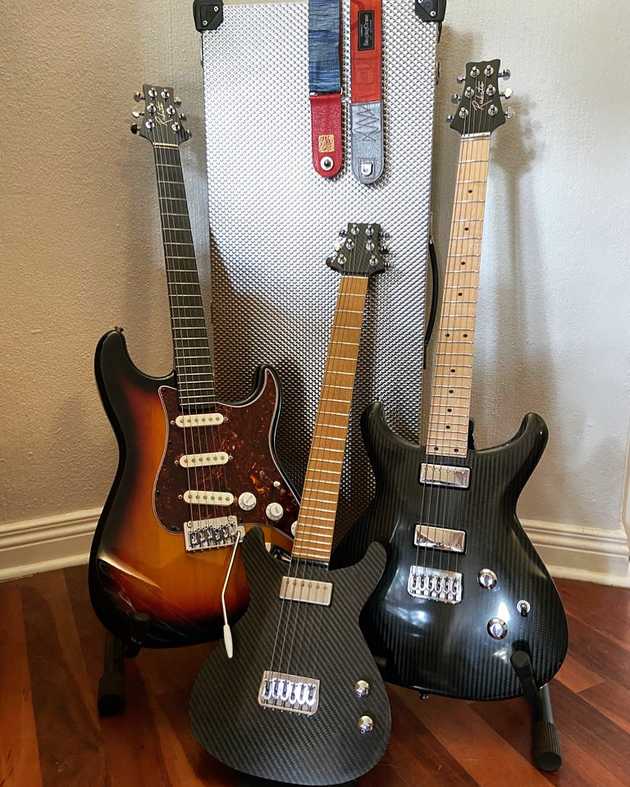What is a Partscaster?
In a nutshell, it’s any electric guitar or bass that can be put together from a variety of parts, as opposed to a complete instrument that is ready-to-play straight out of the box. And, although it can be any style of guitar, a Partscaster normally refers to one with a bolt-on neck. My preference is a Strat-style build but Tele and Jazzmaster styles are also common choices.
Why build one?
Whether you’re a musician with a yen to make something unique for yourself, the DIY type who’s itching for a new project or one of the millions who’s fed up with Netflix after an eternity in lockdown and keen to give something different a go, building a Partscaster provides both fun and satisfaction. And it can be done with minimal tools and mess if you pick the right parts.
What’s more, it’s doable at a number of price points, ranging from what you’d expect to spend on a spanking new Squire, right up to a price tag that could rival the highest-end custom shop bolt-on guitars. Personally, I think the sweet spot is building a Partscaster at a similar cost to an American Strat, which allows for premium components and a build that punches well above its weight.
Convinced? Here’s how to go about it:
There are a few different ways to approach a Partscaster project but, whether you’re buying a cheap guitar and gutting it, revamping a guitar you already own or buying individual parts to make a fully unique build, the most critical thing is to check your parts will go together before you order them. (Dimensions are readily available on most manufacturers’ websites but, if not, contact them for the details.)
The cheapest option is, obviously, to revamp an existing guitar. Plus, it’s a great way to breathe new life into one of your under-appreciated instruments and make you love it all over again.
The easiest is to buy a reasonably priced used guitar and swap out some of the parts. Since aftermarket parts generally use the Fender USA/Mexico dimensions, something like a second-hand Fender MIM (Made in Mexico) is a good base to start. (Squires and other budget guitars often use non-standard sizes which could be problematic.) The upside is that this could, potentially, cost less than it would to buy the individual parts, but it does mean you won’t have as much choice (which could be a good or a bad thing, depending on your level of obsessiveness!).
The optimum way, if you’ve got discerning specs and are after a unique build, is to buy individual parts. Then you can be sure everything is exactly as you want it to be, treating yourself to a hands-on custom shop experience.
Choosing your parts
Since, in my view, the most involved and most fun Partscaster project is a complete build, the rest of this article is focused on an individual parts build for a Strat-style body. To start, here’s a shopping list of all the parts you’ll need:
-
The Big Stuff
- Body
- Neck
-
The Hardware
- Tuners
- Bridge
- Strap buttons
- Jack plate
-
The Electronics
- Pickups
- Wiring harness (potentiometers, jack, switch, capacitor, wire)
- A pickguard
- Knobs and a switch tip
The big stuff
Body
There are a good number of options when looking for an aftermarket Strat-style body. Fender sell official ones but there are dozens of other builders too, ranging from aftermarket giants to much smaller workshops, offering finishes from classic colours and bursts to crazy relicing and other special finish options. (My favourites are from Franchin Guitars in Italy who do some amazing metal leaf and relic work!)
Neck
When it comes to this part, I’m obviously biased. At Rubato Guitars, we make our own fully carbon fibre necks and, as one of our heavy metal customers put it so well, ‘they kick ass’! They don’t need a truss rod … they have a compound fretboard radius … and they come with stainless steel frets featuring our signature ball ends, etc. etc. (For the whole enchilada, look here).
However, if carbon’s not your thing, there are plenty other builders making innovative necks. Alef Guitars are among those making some brilliant aluminium necks, for example, and of course wood is always an option (if you’re boring).
The Hardware
Remember, apart from tuners and a bridge, you’ll also need strap buttons and a jack plate. There’s not much to say here except don’t forget to get some.
Tuners
If you’re going to the trouble to build a Partscaster, you should definitely consider going with locking tuners because, not only will your guitar hold tune far better, but restringing will also be way easier. Our carbon neck comes with our favourite locking tuners from Grover but there are plenty of reputable makers of locking machine heads (and a few different locking methods) to choose from. The trick here is to make sure they are a good match for the holes in your headstock and, as long as they are quality parts, you should be ok.
Bridge
Strat-style bridges come in two main variants: a vintage six-hole mounting and modern two-post mounting. Vintage is pretty much the original mounting design from the 50’s, and the friction on the six screws can cause some tuning issues when using the tremolo. The modern mounting remedies this issue, making set up less fiddly and giving you more confidence in your trem. I don’t see much reason to go with a vintage bridge nowadays but, if that’s your vibe, go for it.
The Electronics
While each electronic part is essential they’re not all going to make your heart race so, without dwelling on them too much, let’s just say you’ll need to make a mental note to select knobs (for your potentiometers) and a switch tip. Hardly riveting, right? But you’ll be frustrated if you get to the end of your build and realise you don’t have them …
Pickups
Welcome to the magical land of tone and voodoo! I’m no pickup expert; I’ve never wound one; and I can’t tell you what effect changing this or that element has; but I do know there are a bunch of boutique companies winding all sorts of amazing pickups that sound all sorts of brilliant. We use Porter Pickups in all our guitar builds and can’t say enough good things about them. (A small boutique business in the guitar world and genuinely nice people to work with, what’s not to love?)
So, no wisdom to offer here, folks, other than suggesting you chat to some winders, watch some reviews and go with what feels right. Just don’t drink too much snake oil. Pickups are basically magnets, wire and some elbow grease and if someone’s waxing lyrical about the supernatural properties of their vintage screws, you’ll know you’ve probably gone too far.
Wiring harness
You’ve got a few options here, depending on your willpower, patience, and/or access to a soldering iron. If you’re hardcore, by all means get yourself the individual potentiometers, switch, capacitor, and jack and then solder your own wiring harness together. It’s not the way I’d go when making a one-off Partscaster, though, because it won’t really save you any money (unless you already have the soldering kit) and the process is likely cause you plenty of headaches.
The easier route is to buy a pre-wired harness and solder in the pickups and switch. (You can even get solderless kits from a few places that allow you to plug the pickup and jack wires right into the wiring harness.) And, if you want to completely eliminate all the hassle here, you can just grab a pre-wired pickguard from your favourite pickup winder. Most offer these and it will eliminate all the, er, friction posed by the weird world of electronics.
By the way, there are bonus build points if you shield your electronics cavity with conductive paint or metal foil to reduce hum. However, if you are going to do this, you need to make a proper Faraday cage for it to work properly, which involves covering the whole cavity and back of the pickguard and ensuring they connect to one another. (Sorry, but that single piece of tinfoil on the back of your pickguard isn’t bucking any hum.)
Putting together your ’Caster
Fortunately, Caster-style guitars are relatively simple to assemble. Kind of like a Lego kit for adults, the process is mostly about screwing a bunch of things together. At worst, you might need to drill a few holes and sand a few edges and, if you bought an unfinished body, you’ll also need to paint or oil it but that’s about it. (A word of hard-earned caution, though: don’t forget to mask off the neck pocket!).
Often the builder that supplies the body will have drilled the bridge mounting holes already, so I’ll assume that’s the case here. (Just make sure the holes match your bridge). However, if you’re doing your own drilling, you’ll need to look up the specific hole sizes and locations as recommended by your bridge supplier. As bridge location is critical, a drill press is ideal, but some people do get by with a handheld drill.
The order in which you put the guitar together doesn’t matter too much but, in general, I recommend starting by testing how the neck and body fit together. You’ll need to push the neck into the pocket from the face of the guitar (not the side, as the tapered profile means it won’t fit).
If they pop together, and the bolts screw in easily all the way, you’re good to go. If the fit is too tight, you might need to gradually sand away some of the side of the pocket until you get a good fit (or chisel, if you’re brave!). If the fit feels loose, don’t worry too much, as long as you can get the bolts in. (If you don’t believe me, check out this Instagram post from JW Restoration who specialises in vintage Fender repairs and has seen their fair share of holy-grail Strats.)
Once happy with the neck and body fit, I like to take them apart so I can assemble the entire body separately. Working on the body without the neck makes it quite a lot easier as you’re able to flip and rotate the body comfortably on a workbench without worrying about putting a ding in the neck.
Hardware installation
First, install the bridge by following the manufacturer’s instructions. (This might just be a question of screwing it directly into the body or could involve hammering in some threaded inserts). Then, tape the pickguard in place on the body (by using the bridge and neck pocket to locate it).
Once that’s secured, drill all the pickguard mounting holes and repeat the tape/drill process for the jack plate. For the strap buttons, you can place masking tape over the rough locations and mark them up or eyeball their positions if you’re comfortable doing so. (However, I’d wait to the very end of the build to screw the buttons on to avoid scratching anything).
Electronics soldering and installation
This step can range from trivial to time-consuming. If you bought a pre-wired pickguard, it’s already done. but you can also save quite a bit of time and effort by going with a pre-wired harness (like these ones from James’ Home of Tone). Alternatively, all the electronics (potentiometers, switch, capacitor) can be bought separately, and the entire harness can be soldered from scratch. But, as mentioned earlier, there’s next to no cost saving here (unless you own a soldering iron) so, unless this gives you a major kick, if you’re only building one guitar you might want to pass.
Final assembly
Once your body is complete, it’s time to bolt the neck on so, string up the guitar and attempt a rough set up to check if the neck break angle is suitable.
The correct neck break angle should allow for the bridge saddles to be set at a comfortable height (i.e., not right at the edge of their adjustability up or down) for your desired string action. If this is not the case (say, you have to drop the saddles right down to the body to get a reasonable string action), you may need to insert a shim into the neck pocket to adjust the break angle. This isn’t a problem, it’s just part of the guitar’s set up and adjustment is so common that many production and boutique guitars ship with shims from the factory.
Give it a proper set up
This is the most important part of your build. Without a good set up you’re unlikely be happy with your guitar and, for myself, I know that if I enjoy the playing experience on a guitar, I actually play it a lot more.
It’s not too difficult but, if you’re not comfortable doing it yourself, don’t be shy about going to your local guitar tech. Everyone can do with a bit of work right now.
However, if you’re keen to give it a go (and there’s no question it’s a useful skill to have, especially if you have a few guitars), this guide on Fender’s website is a great place to start.
Tweaking and modding
So that’s it! With any luck, if you follow these guidelines, you should be the proud owner and builder of a Partscaster.
Of course, it’s possible that you may, like me, find yourself with an insatiable desire to continue meddling with it. There are pick up heights to play with … you could make the bridge float … or adjust the tremolo arm feel … or do a treble-bleed mod?
The beauty is, you’ll be able to tweak forever. Just don’t forget to play!
